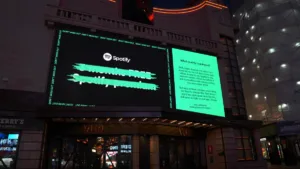By Nick Millward, VP Europe at mGage
In recent months, the impact of the COVID-19 pandemic has been felt by everyone and in turn, brands have adapted their strategies and found new ways to communicate to a mass audience. As the situation continues to cause disruption worldwide, mobile messaging has become more important than ever as brands navigate the new landscape to keep customers updated, informed, assured, and interested in what they have to say.
Since lockdown began in March, mobile messaging has seen a massive influx with all industries utilising messaging platforms to quickly and efficiently spread key updates far and wide to stay connected with their customers, partners and staff. With 57 percent of consumers strongly approving of brands providing practical information and tips on the current pandemic via mobile messaging, it is evident that the move to mobile has paid off.
A change in consumer sentiment
In recent years customer behaviour has been changing, with millennials opting for more interactive and simple ways to communicate with the brands that they use. This trend has been accelerated by COVID-19 and it is likely that consumers of all ages and demographics will become accustomed to this new way of connecting with brands on their own terms. The global situation has also changed the way that consumers look at the brands that they interact with. A recent study by Edelman highlighted that 65 percent of customers are basing their future purchase decisions on a company’s response to the crisis.
In order to stay relevant, brands need to embrace the channels that their customers mostly use – particularly as more than 50 percent of consumers surveyed as part of an mGage study, prefer to message rather than speak to a brand on the phone.
Achieving mobile messaging success
Mobile messaging should be a pivotal investment, with 97 percent of companies finding that they communicated more efficiently with consumers after launching it as part of their strategy. There are numerous mobile engagement services that brands can adopt such as SMS, Push messaging and MMS, alongside established platforms such as WhatsApp, Facebook Messenger, and Apple Business Chat.
One channel that has remained relevant due to its simplicity and almost guaranteed read rate is SMS. Most messages are read within three minutes of delivery and achieve an open rate of 98 percent compared to email communication. Since lockdown began there has been a huge jump in the volume of SMS messages being sent with an increase of 33 percent month-on-month.
To improve the customer experience further during this time, particular industries have been looking to adopt text chat for two-way engagement over mobile. This helps alleviate pressure on call-centres or enables consumers to text a keyword to a short code to request a call-back. Some brands have been utilising a range of messaging platforms to support their customers to ensure that they stay safe and healthy during the pandemic. A COVID-19 program to feed the elderly, disabled and vulnerable community was led by a UK supermarket and the Scottish government where a text message was sent to vulnerable consumers to remind them of their options during this difficult and unprecedented period.
Now as we move into the next phase there are many opportunities for industries including hospitality. With restaurants and pubs having to collate customer information when people enter their premises, mobile messaging could be a very beneficial tool. Customers could text in their personal information to a shortcode rather than having to write it down which in return offers a contact-free process. Should they need to contact their customers quickly as COVID-19 has been suspected on their premises they can easily send a text message to the relevant customers. This negates the time-consuming task of calling all customers individually and informing them of the risk.
Alongside the opportunities for hospitality, brands can also use mobile messaging to accelerate mobile app usage. By sending consumers Push Notifications to their mobile device, brands can ensure stronger user engagement and another stream of revenue by enticing customers with attractive offers.
When it comes to getting the most out of mobile messaging, a mix of platforms has been proven to add value. In parallel to the traditional channels, brands need to utilise platforms that will allow them to keep up with the changing behaviours of consumers. Next-generation messaging channels such as Rich Communications Services (RCS), have already proven successful by early adopters in the retail, hospitality and charity sectors – achieving engagement rates 14 times higher than traditional SMS. This latest technology means that brands can incorporate text chat using the platform’s suggested response buttons and actions alongside multimedia content to send engaging and visually appealing messages. They also have the ability to gather vital customer feedback from within this same easy-to-use channel.
There is no denying the importance of communication during a period of crisis and businesses have been forced to reassess their communication strategies. With the reach of mobile messaging, brands can ensure that consumers receive the highest levels of customer service possible in the most accessible way.









